Gravitational Waveforms


The gravitational wavetrain from a compact binary system may be separated into three qualitatively different phases: the inspiral, merger, and ringdown. During the inspiral phase, which takes up most of the binary's lifetime, gravity wave emission gradually reduces the binary separation. The merger phase of the gravitational wavetrain is characterized by tidal disruption of the neutron star. Finally, ringdown radiation is emitted as the distorted black hole settles down to Kerr-like equilibrium (Note: Only in the case of a vacuum spacetime does the spinning BH obey the exact Kerr solution. The BHs formed here are surrounded by gaseous disks with small, but nonnegligible, rest mass). Both polarization modes (h+ and hx) are shown.
In this case, a magnetized neutron star is orbiting a black hole with spin SBH/MBH2=0.75 oriented parallel the binary orbital angular momentum. Shown below are hx in both hemispheres, h+ in just the lower hemisphere, and h+ in both hemispheres. Waveforms are plotted in the region of r/M ≥ 60. The evolution is followed through tidal disruption, merger, and ringdown. The matter is now evolved by solving the relativistic MHD equations and the gravitational field is evolved by solving the BSSN form of the Einstein field equations.
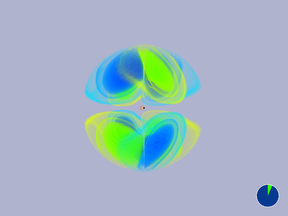 Fig. 3-1: hx at time t/M = 674 |
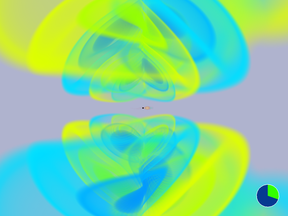 Fig. 3-2: hx at time t/M = 832 |
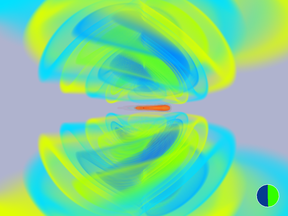 Fig. 3-3: hx at time t/M = 963 |
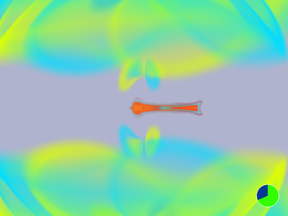 Fig. 3-4: hx at time t/M = 1094 |
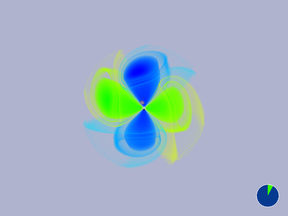 Fig. 3-5: h+ at time t/M = 674 |
 Fig. 3-6: h+ at time t/M = 832 |
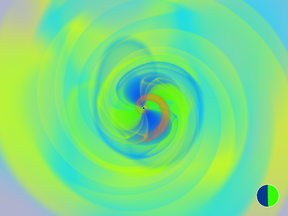 Fig. 3-7: h+ at time t/M = 963 |
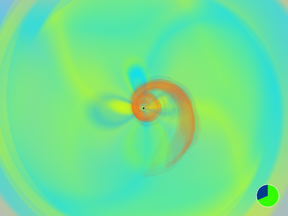 Fig. 3-8: h+ at time t/M = 1094 |
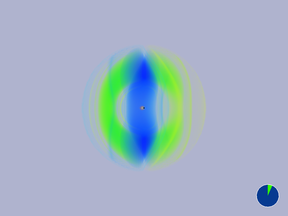 Fig. 3-9: h+ at time t/M = 674 |
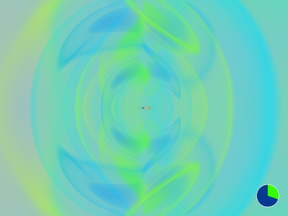 Fig. 3-10: h+ at time t/M = 832 |
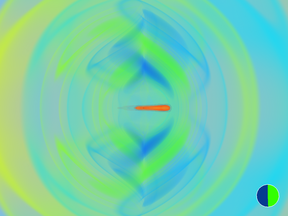 Fig. 3-11: h+ at time t/M = 963 |
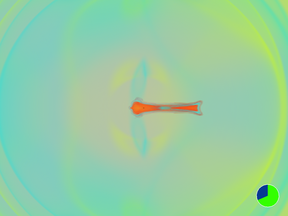 Fig. 3-12: h+ at time t/M = 1094 |